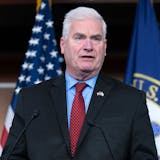Health insurance shoppers often focus on premiums when comparing policies.
The strategy can backfire, consumer advocates say, when low monthly premiums leave people on the hook for big medical bills if they use health care.
The state's MNsure health insurance exchange and the federal government's HealthCare.gov website are responding this fall with new online tools that try to highlight the out-of-pocket costs.
The tools are especially important on the government-run exchanges because shoppers at certain income levels who focus on premiums could miss extra financial benefits that are built into the federal Affordable Care Act.
"This flags premium vs. deductible and total cost in a nice way, and that was my biggest concern," said Tom Forsythe, a MNsure board member, after a presentation of MNsure's new online tool during a board meeting Wednesday in St. Paul.
"Without a comparison … I might choose a health plan based on the premium, and it might be a really bad decision if I didn't totally grasp that it had a $12,900 deductible," Forsythe said. "I think it could help people not make a mistake."
Deductibles are an amount that health insurance enrollees must pay before most health care services are covered as part of their benefits.
After growing in size and prevalence for many years, health plan deductibles increasingly are being criticized for contributing to the growth in unpaid medical bills while creating a new form of financial insecurity for consumers. Bigger deductibles and other forms of "cost sharing" such as co-payments and coinsurance are also seen adding to the confusion and frustration that many experience when shopping for health insurance.


